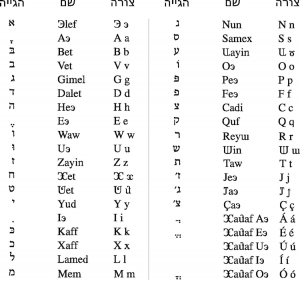The Most Difficult Things About Learning Hebrew
Opinions on the difficulty level of learning Hebrew are divided, although generally speaking, the language tends to place pretty high up on the list of the toughest. Don’t be intimidated though. It certainly is not the most brutal of learning curves.
However, there are certain quirks that may prove a challenge to new speakers. This, as in learning any new language, also depends on your native tongue. For example, French speakers may find certain aspects of Hebrew easier to learn due to some pronunciation similarities, as well as familiarity with gendered subject forms. English speakers on the other hand might find these features to be discouraging stumbling blocks.
New speakers will also find themselves adjusting to reading the language right to left, as well as learning an entirely new alphabet. As with any language, learning Hebrew has its difficulties but also rewards, and these obstacles should not prevent one from mastering this ancient language!
Here is a handy breakdown of the four aspects new learners may find the most challenging, and tips for getting over them.
Explore our Hebrew courses with qualified native teachers in your city or online!
An Unfamiliar Alphabet

Hebrew alphabet via he / Wikimedia
This one will, at first glance, seem to be the biggest challenge, but it can gradually become a lot easier than expected. Although the Hebrew script looks highly unfamiliar, it actually originates from the same stem that the modern English (or Latin) alphabet does – Phoenician. This means, once you really start looking at individual letters, you’ll notice similarities between them – some more than others.
Take a couple of days to really familiarize yourself with the letters, trying to make visual connections between them and the familiar Latin alphabet.
Reading from Right to Left
Not only must you master the alphabet and learn complex conjugations, but you’ll also have to remember to read from right to left. This adjustment is perhaps the smallest obstacle to clear when learning Hebrew, but is certainly not instinctive for most new learners.

Medieval Hebrew via Amire80 / Wikipedia
Pronunciation
Depending on your first language, certain sounds may be difficult to pronounce. For example, the distinctively guttural “r” sound. In that vein, the “ch” sound is pronounced like the Scottish “loch.” Furthermore, some distinct sounds can overlap, and end up sounding exactly the same to the unfamiliar ear, making learning that much more difficult.
Conjugations
Verbs, much like French, take on different forms depending on whether the subject is male or female. Although the language conjugates in only two tenses, the gender modifier complicates things. In addition, person – first, second, third – also acts as a modifier along with singular and plural forms, causing verbs to have multiple forms in each tense.
Don’t be put off by these challenges; once mastered, Hebrew is a fascinating ancient language to become familiar with. If you are interested in beginning a course in Hebrew, or looking to become more fluent, you’ll find courses in various cities here!
Explore our Hebrew courses with qualified native teachers in your city or online!


